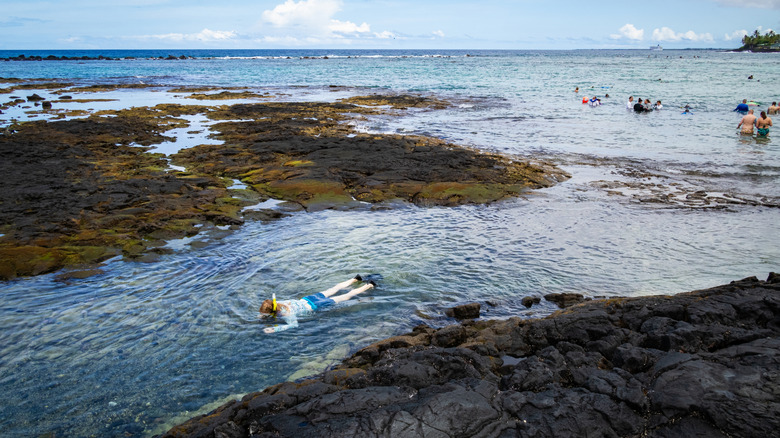This Popular Beach In America Has The Highest Bacteria Rate (And Tourists Keep Flocking To It)
Hawaii is the kind of dream getaway that ends up on a vision board. You picture yourself sipping from coconuts, surrounded by vibrant hibiscus, and sinking your toes into turquoise water so clear it looks unreal. Unfortunately, many travelers fail to do their research, and like any coastal state in America, there are some places where you should proceed with caution. The particular shoreline in question is Kahalu'u Beach in Oahu. While there are some amazing experiences you'll only ever have in Oahu, you'll want to check the cleanliness of its postcard-worthy shoreline. Tourists continue to visit, as this area is the ultimate swimming and snorkeling destination on Hawaii's Big Island, but underneath the surface, it's hiding a huge problem: bacteria.
The Surfrider Foundation collected samples from various Hawaiian beaches, including Kahalu'u's. When the group released its 2024 Clean Water Report, Kahalu'u Beach reportedly had a high bacteria rate of 92%. As the report explains, the high bacteria rate refers to the "percentage of samples collected that fail to meet the state health standard for recreational waters." Among the shorelines measured, Kahalu'u Beach had the highest concentration of bacteria. Stormwater runoff contributes a lot to this pollution, and the bacteria lurking in these waters can pose serious health risks to humans, from skin infections to gastrointestinal illness.
Understand the health risks of bacteria-infested waters
According to the U.S. Environmental Protection Agency (EPA), the most common illnesses humans can develop from beachfront bacteria are gastrointestinal illnesses, which include symptoms such as nausea, vomiting, stomachache, diarrhea, headache, or fever. You can even get infections in your ears, nose, throat, or eyes. In order to prevent this from happening, steer clear of beaches known for high bacteria rates. If you do decide to enjoy these waters, the EPA says to look for potential safety signage around the area. Avoid swallowing water, keep open wounds out of the water, and wash your hands after playing in the sand.
Hawaii's Department of Health has a Clean Water Branch (CWB) working toward prevention, as well. The state conducts routine water quality monitoring and testing for bacterial indicators like enterococcus. Additionally, public advisories inform constituents of any risks the waters may pose. The CWB also conducts follow-up sampling to ensure compliance with EPA standards.
So, before you fly to paradise, make sure you're not diving into a hidden health hazard. Even the most beautiful beaches can come with unseen risks beneath the surface. Want to learn more? Discover why this Hawaii beach is one of the dirtiest places on Earth.

